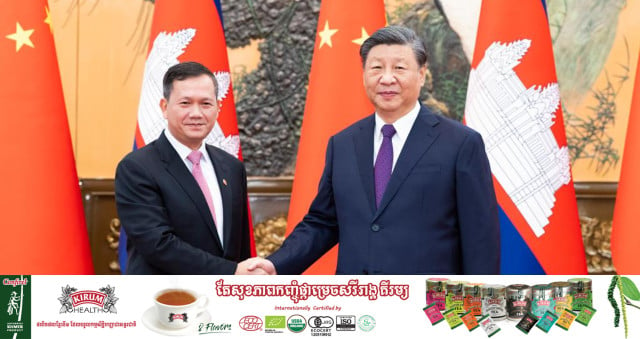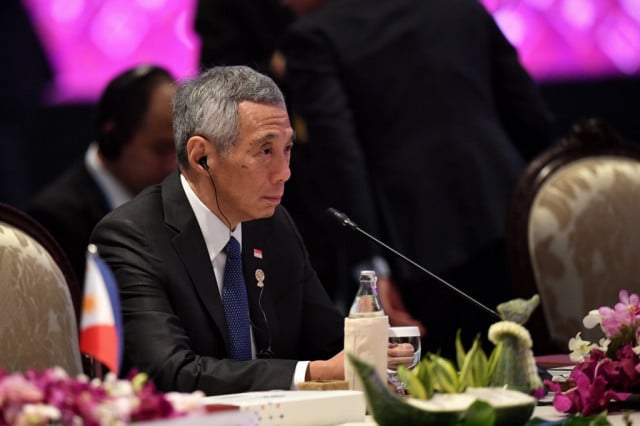Why China Should Aim for Cambodia as an Exemplar of BRI Success Story

- By Manghout Ki
- October 13, 2023 2:48 PM
China's Belt and Road Initiative (BRI) has garnered praise and criticism since its launch in 2013. While the initiative aims to promote economic connectivity and development across Asia and beyond, concerns have been raised about transparency and the possibility of debt traps for participating nations. In this commentary, China should use its flourishing relationship with Cambodia to showcase the BRI's positive aspects, addressing transparency concerns and positioning Cambodia as a model for successful implementation.
Cambodia's relationship with China has blossomed over the years, exemplifying a solid bilateral relationship. China has become Cambodia's largest source of foreign direct investment and aid. Moreover, both countries share strategic interests, making their partnership increasingly significant in the regional context.
One of the primary objectives of the BRI is infrastructure development, and Cambodia offers a compelling case study in this regard. China's investments in Cambodia's infrastructure have significantly contributed to the country's economic growth. For example, constructing highways, bridges, and ports, such as the Sihanoukville Special Economic Zone, has facilitated trade and boosted Cambodia's export capabilities.
These infrastructure projects have improved connectivity within Cambodia and enhanced Cambodia's role as a crucial link within the ASEAN region. Cambodia's economic prosperity, partly fueled by Chinese investments, can serve as a model for other BRI participant nations.
China's investments in Cambodia have been wider than physical infrastructure. The BRI's focus on poverty alleviation and job creation has also been evident. For instance, Chinese investments in the textile and garment industry have generated employment opportunities for Cambodians, helping to lift many out of poverty.
Moreover, the development of the Cambodia-China Friendship Hospital in Phnom Penh is another testament to China's commitment to improving the lives of Cambodians. This healthcare facility provides quality medical services to the Cambodian population and represents a tangible example of China's contributions to social development.
Cultural exchange and tourism are vital components of the BRI, fostering people-to-people connections between nations. With its rich history and cultural heritage, Cambodia has seen a surge in Chinese tourists, thanks in part to enhanced connectivity. Chinese tourists contribute significantly to Cambodia's tourism industry, providing economic benefits and promoting cross-cultural understanding.
Critics of the BRI often cite concerns about transparency and debt sustainability. Cambodia's success story within the BRI framework can be leveraged to address these concerns.
To elevate Cambodia as a model for the BRI, China should emphasize transparency in project execution. This includes clear agreements, public disclosure of terms, and adherence to international standards. By showcasing transparency in Cambodia, China can demonstrate its commitment to responsible lending and project implementation.
Moreover, China can also work closely with Cambodia to ensure responsible debt management. Collaborative efforts to assess the country's debt capacity and develop a sustainable repayment plan can allay fears of debt traps. Such actions will benefit Cambodia and bolster China's reputation as a responsible global player.
Environmental concerns are also paramount in today's world. With its rich biodiversity and fragile ecosystems, Cambodia presents an opportunity for China to emphasize sustainable development within the BRI. China can invest in projects that adhere to environmental standards, demonstrating its commitment to ecological preservation.
An exemplary BRI model in Cambodia should also prioritize local empowerment and capacity building. This includes transferring technical knowledge and skills to Cambodian workers and fostering collaboration with local businesses. By doing so, China can ensure that Cambodia reaps the long-term benefits of its investments.
Cambodia's relationship with China serves as a testament to the potential successes of the Belt and Road Initiative. By focusing on economic development, poverty alleviation, transparency, and sustainability, China can position Cambodia as an exemplary model of the BRI. Such a demonstration of success can help allay international concerns, foster more trust in the initiative, and positively impact participating nations. As Cambodia continues to prosper within the framework of the BRI, it stands as a shining example of what can be achieved through strategic cooperation and responsible development.
Ki Manghout is a research fellow at the Asian Vision Institute (AVI)















